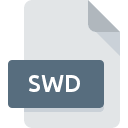.SWD File Extension

Flash Debug File
| Developer | Adobe Systems |
| Popularity | |
| Category | Developer Files |
| Format | .SWD |
| Cross Platform | Update Soon |
What is an SWD file?
.SWD file, holds significance in the realm of Adobe Flash, serving as a vital component in the debugging process.
This article delves into the origin, history, structure, technical specifications, advantages, disadvantages, conversion methods, and accessibility across different operating systems for .SWD files.
More Information.
Initially, Flash lacked robust debugging capabilities, making it challenging for developers to identify and rectify errors within their projects efficiently. To address this limitation, Adobe introduced the .SWD file extension as part of the Flash authoring environment.
The primary purpose of .SWD files are to facilitate the debugging process by storing debug information related to a Flash application.
Origin Of This File.
The .SWD file extension is intrinsically tied to Adobe Flash, a multimedia software platform used for creating vector graphics, animations, and interactive applications.
Its origins can be traced back to the evolution of Flash and its emergence as a dominant force in web development during the late 1990s and early 2000s.
File Structure Technical Specification.
The structure of .SWD files are designed to accommodate essential debugging data required during the development and testing phases of Flash projects.
These files typically contain metadata, such as variable names, line numbers, and other debugging symbols, associated with the compiled Flash application.
Technical specifications of .SWD files may vary depending on the version of Adobe Flash used to create them.
Common elements include references to ActionScript classes, function names, and line numbers corresponding to the source code.
How to Convert the File?
Converting .SWD files to other formats aren’t a direct process due to their specialized nature. Developers often need to extract data from .SWD files for analysis or integration into other development workflows. Here’s a general approach to convert .SWD files:
- Extract Debugging Data: Use tools or scripts to extract debugging information from .SWD files. This data typically includes variable names, function names, line numbers, and other runtime details.
- Translate to Intermediate Format: Translate the extracted data into an intermediate format like JSON (JavaScript Object Notation) or XML (eXtensible Markup Language). This step involves structuring the data in a way that’s easier to manipulate and integrate with other tools.
- Manipulate and Transform: Manipulate the data as needed, such as filtering out irrelevant information or restructuring it to fit the target format. This step ensures that the converted data is optimized for its intended use.
- Convert to Desired Format: Finally, convert the data to the desired format based on your specific requirements. This could involve further transformations or processing to ensure compatibility with the target application or environment.
While this approach provides a general framework for converting .SWD files, the specifics may vary depending on the tools and technologies available in your development ecosystem.
Advantages And Disadvantages.
Advantages:
- Debugging Support: .SWD files provide developers with crucial debugging information, enabling them to identify and resolve issues more effectively during the development process.
- Enhanced Productivity: By streamlining the debugging workflow, .SWD files contribute to increased productivity and faster development cycles.
- Improved Code Quality: Access to detailed debugging data helps developers write cleaner, more efficient code, leading to higher quality Flash applications.
Disadvantages:
- File Size Overhead: .SWD files can add to the overall size of a Flash project, particularly for larger applications with extensive debugging information.
- Compatibility Issues: As Flash technology becomes obsolete, compatibility issues may arise with newer development environments and platforms.
- Security Concerns: Debugging information stored in .SWD files could potentially expose sensitive data or provide insights into the inner workings of a Flash application, posing security risks if not handled properly.
How to Open SWD?
Open In Windows
- Utilize IDEs like Adobe Animate, FlashDevelop, or IntelliJ IDEA with the Flash plugin. These IDEs offer comprehensive debugging capabilities and support for Flash development on Windows.
- Adobe Animate, in particular, is a popular choice for opening and debugging .SWD files on Windows due to its extensive feature set and compatibility with Adobe Flash projects.
Open In Linux
- Cross-platform IDEs like IntelliJ IDEA with the Flash plugin can be used on Linux to open and debug .SWD files. While native support for Flash development on Linux is limited, these tools provide a viable alternative for Linux-based development workflows.
- Experiment with compatibility layers like Wine to run Windows-based IDEs on Linux systems. While not officially supported, Wine can often enable compatibility with Windows software, allowing Linux users to work with .SWD files using familiar development tools.
Open In MAC
- Adobe Animate remains a viable option for macOS users looking to open .SWD files. Its cross-platform compatibility and robust debugging tools make it a suitable choice for Flash development on Mac systems.
- Consider exploring open-source IDEs like FlashDevelop or running Windows-based IDEs through virtualization software like Parallels Desktop or VMware Fusion.













